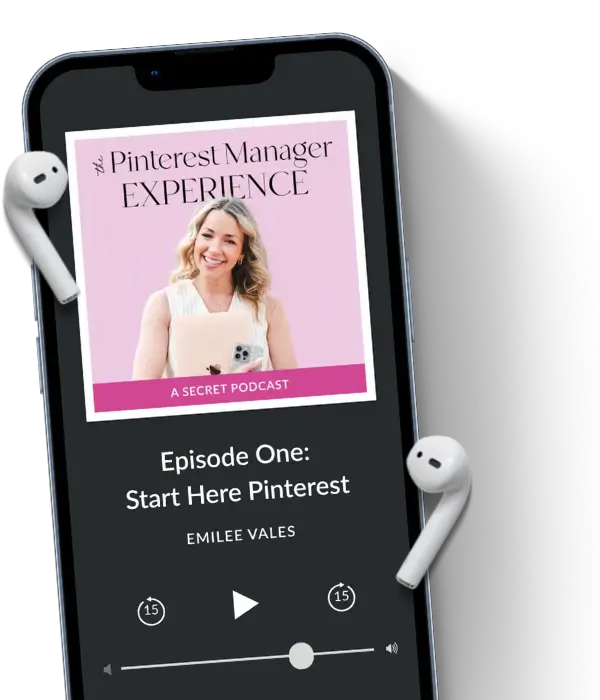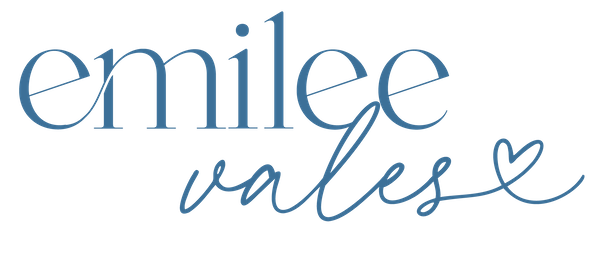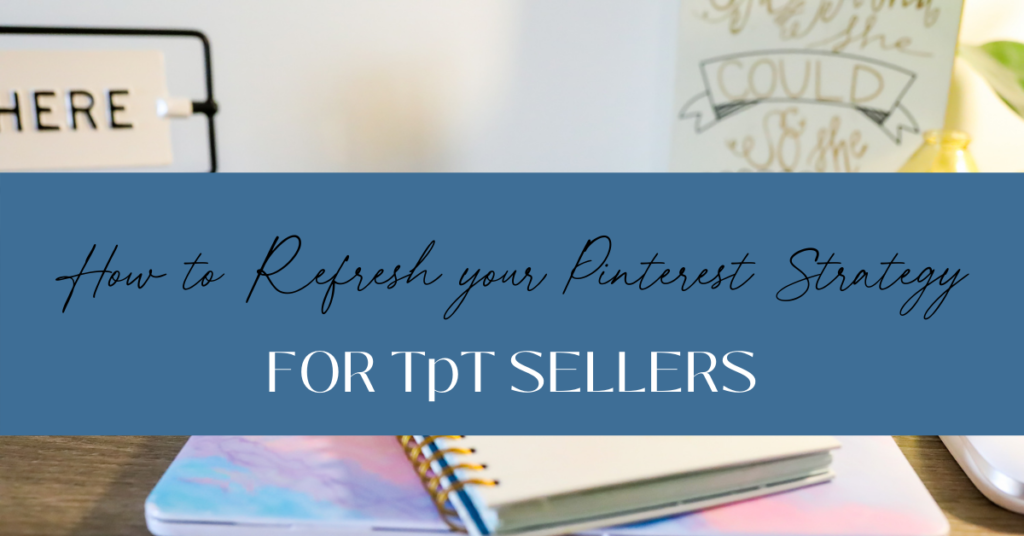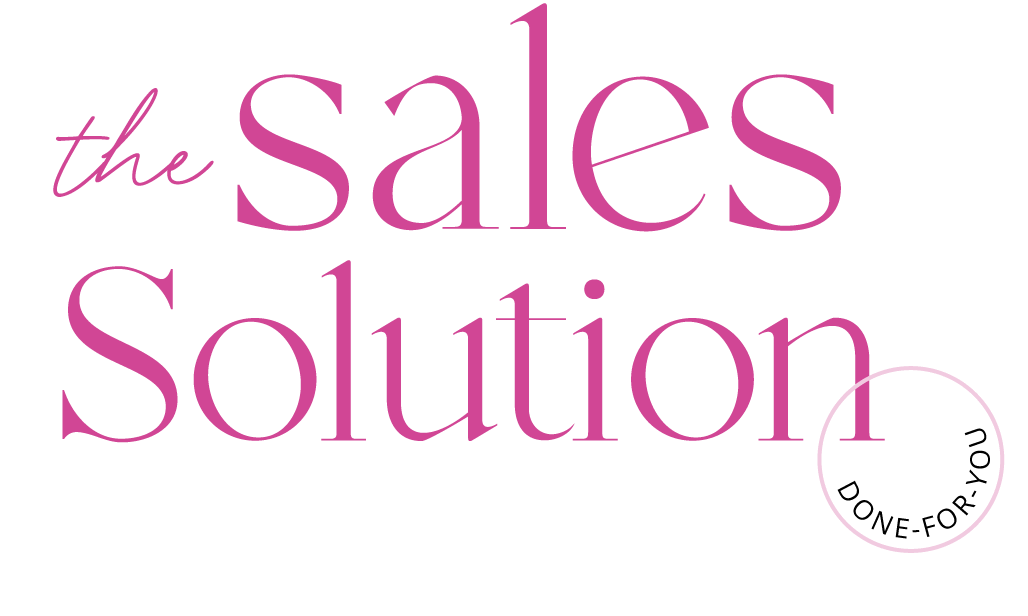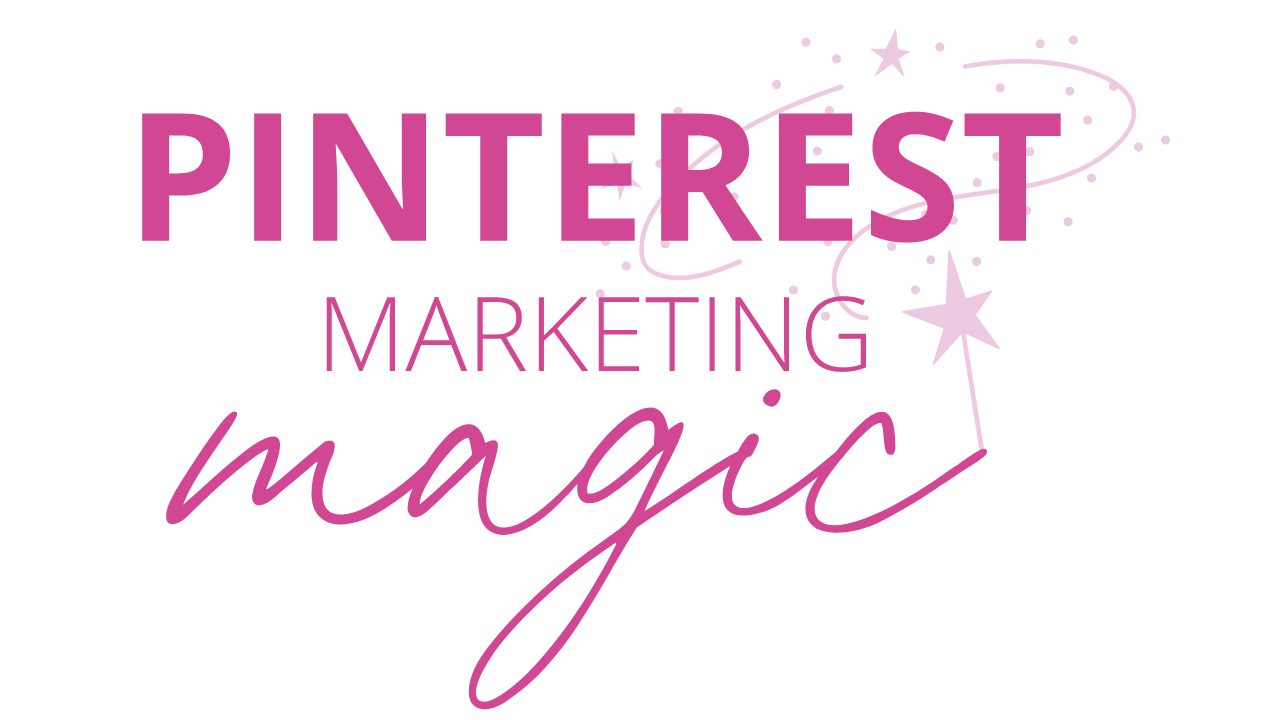The online world is always changing and evolving, and so are the platforms we know and love. From a user perspective, this can make the apps more engaging, addicting, (anyone else gone down the rabbit hole of reels??), and fun, but from a business marketing perspective, it can sometimes feel like a headache. Let’s avoid the nightmare of wondering what to pin next and hit REFRESH on your Pinterest strategy!
There is one absolute takeaway in this industry: as a TpT Seller using platforms (Pinterest, Facebook, and Instagram) for marketing, you have to continually evolve your strategy.
Sometimes evolution means testing, and through trial and error, seeing what works and what doesn’t.
Before you start testing, let’s give your Pinterest strategy a makeover! After this makeover, you should have a clear understanding of what you need to do (and keep doing) to boost your Pinterest traffic.
STEP 1: The Foundation – Reassess your Pinterest Goals
Let’s talk about why you’re using Pinterest for your business. Is it for brand awareness, lead generation, sales, or something else?
Just FYI, it doesn’t count to say, “I want traffic to my site”. Why do you want traffic? What do you want that traffic to do?
Say you’re crystal clear on why you’re using Pinterest – to increase your TpT sales. Seems like a good goal, right?
In order to gain more sales, it is natural that you’d want to direct more of your pins to TpT. However, if I’ve said it once I’ve said it a hundred times, pins directed to TpT don’t perform well for multiple reasons.
I won’t go through those reasons now, but if you know they don’t do well, then we need to take a step back in your sales funnel. Think about what would be a new natural step in your funnel prior to going to your TpT store or product listing.
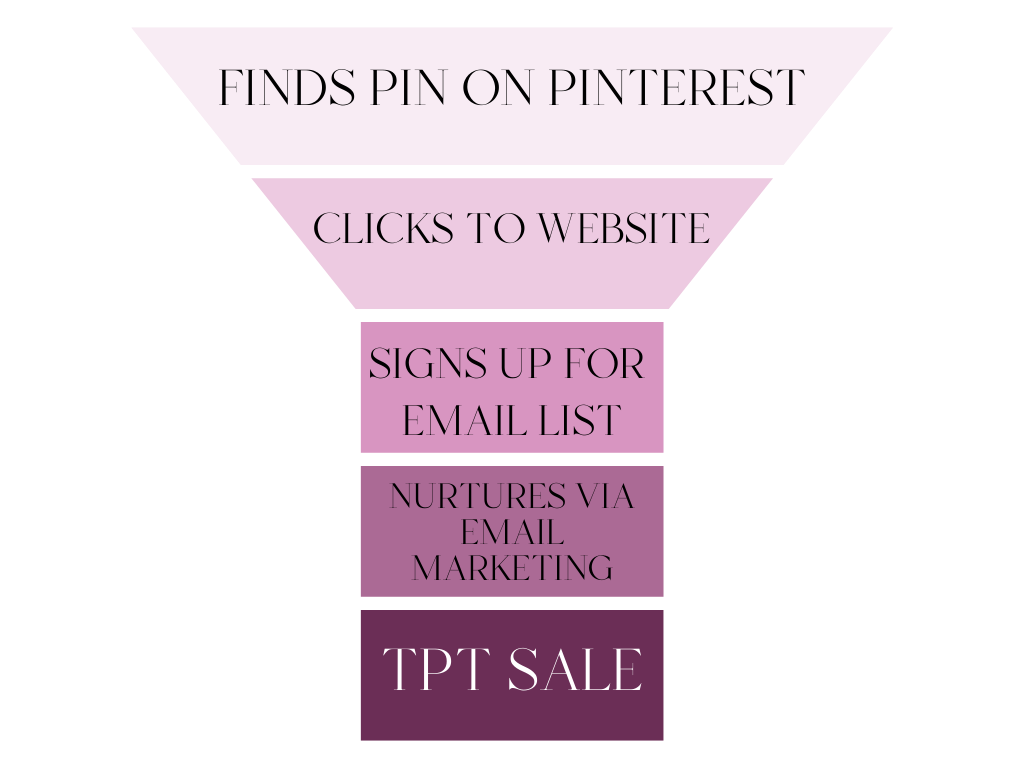
Based on this visual, the step before going to your TpT store and/or specific product listing would be to read a blog post. Through this blog post, you share ideas, tips, and inspire your potential customers and help them envision using your product with their students.
Pinterest is an amazing platform to bring customers into your funnel. With that being said, if you aren’t having much success with getting those direct sales, it’s time to create a new objective.
Maybe your new objective should be lead generation.
Building your email list could be your priority, and then through your email list, you can nurture your customers before that direct sale.
It’s not that you won’t eventually get sales from the people you bring into your funnel from Pinterest, but the first way you’d be measuring your success on Pinterest is by how many new email signups you receive rather than TpT sales.
Now that you’ve clarified what your Pinterest objective is, it’s time to move onto…
STEP 2: Plan Content that will Boost your Pinterest Traffic
One of the biggest challenges I see with my clients is a lack of consistency and intentionality with blogging. We know blogging is a crucial step in order to get potential customers either on your email list or to your TpT store.
This means it needs the time, planning, strategy, and consistency it deserves. Feeling lost when it comes to planning your blog? Check out my new FREE Pinterest strategy guide!
As a TpT seller, your niche is heavily influenced by seasonality. Unlike other niches, it pays to be a step ahead of the seasons and trends!
Not only does planning help you stay ahead of the trends, but it also helps you plan blog posts that strategically position content to reach your goals.
It looks like this:
Blog strategy = consistently producing high-quality content = content that will lead to more traffic on Pinterest = longer sessions on your website = more conversions for your business.
Let’s say your Pinterest strategy goal is lead generation. Asking yourself the following when you’re planning and mapping out blog content:
- What lead magnets do I have?
- What type of content could I create where I can naturally share my lead magnets?
If your goal or objective is still TpT sales, ask yourself:
- What type of blog posts should I write that allow me to share my best-selling TpT products?
- When do I need to start writing blogs to share my seasonal products?
These are just a few ideas for questions you should be asking yourself when planning your blog content!
STEP 3: Change up and Track your Pinterest Tactics
While your Pinterest tactics can change frequently, your Pinterest strategy should not.
In this step, I want to share some of the different tactics you can change and then test to see if they help drive more traffic. Remember, if you’ve optimized your blog as you should have in step 2, your traffic should convert!
Now, back to the tactics!
The number of pins per day: You can test to see how many work for you, but you also have to consider your base of content. If you haven’t created many Pins, I would not recommend increasing the number of Pins per day.
On the flip side, you could also try decreasing how many Pins you’re pinning per day if you think you’re repinning too frequently. An example of a strategy for your Pins per day could be: You pin 10 Pins per day, 8 of them are your Pins, and 2 of them are from other niche-related content creators.
Diversification + Fresh Pin Strategy: If you aren’t already, try incorporating static, video, and Idea Pins into your strategy.
Try creating 4-5 fresh static Pins weekly, 1-2 video Pins, and 1-2 Idea Pins. Pay attention to what’s performing well, and maybe add in an additional video Pin if they’re performing well for you.
Regardless of the composition, I do recommend sharing all 3 of these types of Pin formats.
Pinterest Pin Destination: Based on your objective, where are you sending your traffic?
If you’re focusing on building your email list on Pinterest, then send the majority of your traffic to either your blog or occasionally a landing page for your lead magnet.
This means (you guessed it) you aren’t sending any or very little traffic to TpT.
STEP 4: Pinterest Keywords
The fourth, and final step, will be refreshing your keyword strategy!
When was the last time you looked over the pillar and long-tail keywords you wanted your business to be ranking for on the platform? Keywords might be the last step I’m sharing, but only because I saved the best for last!
Because Pinterest is a search engine, keywords are vital.
When you write your blog posts, you’ll want to make sure you’ve done your SEO research. Then when you’re creating your Pinterest Pins, and writing Pin titles and descriptions, you’ll want to make sure that they are optimized for Pinterest!
Optimizing your content for Pinterest means you’re making it more discoverable, which leads to more traffic and sales over time.
Last Thoughts…
I’m already excited to write next week’s blog post because now that we’ve discussed refreshing your strategy, next week I’ll cover how to refresh your account!
In the meantime, if you’re looking for more Pinterest support for your TpT business, you can download my FREE Pinterest strategy guide and check out my signature DIY Pinterest course, Pinterest Marketing Magic!
